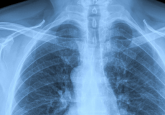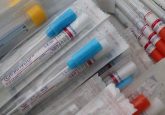COVID-19 low-cost and laboratory-safe detection protocol

New study reports cost-effective, rapid and easy to perform RT-PCR-based method for the detection of SARS-CoV-2 / COVID-19.
Author: Atanas G Atanasov is a leading scientist interested in molecular medicine and digital health, PI of LBIDHPS, Editor-in-Chief of CRBIOTECH and Executive Director of INPST. Social media contacts: Twitter, LinkedIn, Facebook.
Prof Atanas G. Atanasov holds a MSc degree in Biotechnology, PhD degree in Biochemistry and Habilitation (Privatdozent (PD) degree) in Pharmaceutical Biology (issued from the University of Vienna, Austria). He is currently Principle Investigator of Ludwig Boltzmann Institute for Digital Health and Patient Safety at Medical University of Vienna (Austria), Adjunct Professor at IGAB PAS (Poland), Guest-Professor at Bulgarian Academy of Sciences (Bulgaria), Guest-Lecturer at the University of Vienna (Austria) and Editor-in-Chief of Current Research in Biotechnology (Elsevier). Dr Atanasov has published over 200 papers with a focus on Molecular Medicine, Biotechnology and Natural Products. Moreover, he is a pioneer in digital science communication approaches (e.g., using diverse social media networks, including a Twitter channel with over 100,000 followers) and was named #11 in the world on the “Top 25 biotech influencers to watch on Twitter” and #44 in the world on the “Twitter top 100 – scientist” rankings by Disruptor Daily and Finster Data, respectively. Moreover, he is the Founder and Executive Director of the International Natural Product Sciences Taskforce (INPST), an open innovation platform bringing together scientists and key opinion leaders of the natural product scientific research field, as well as members of multiple scientific excellence centers and pharmaceutical-, biotech-, healthtech- and natural product-related industries, united with the aim to promote collaborative natural product-linked research, technology development, health literacy and biomedical science communication.
The new coronavirus disease 2019 (COVID-19) was first reported in Wuhan, China, in December 2019 and it rapidly spread to over 100 countries, prompting the World Health Organization to declare this disease to be a pandemic on 11 March 2020. COVID-19 is caused by Severe Acute Respiratory Syndrome Coronavirus 2 (SARS-CoV-2), a virus belonging to the large coronavirus family of RNA viruses that also includes viruses causing more mild respiratory tract infections (such as the common cold), as well as more severe diseases such as Middle East Respiratory Syndrome (MERS) and Severe Acute Respiratory Syndrome (SARS).
SARS-CoV-2/COVID-19 spreads from person-to-person through small droplets transmitted by the infected person through coughing, sneezing or breathing. These droplets can be directly inhaled by other people to cause new infections, or first land on different surfaces that can then be a source for infection for the individuals touching it (followed by touching their eyes, nose or mouth, which all can serve as entry points for the virus). In line with these infection routes, to prevent transmission current guidelines recommend keeping a distance of at least 1m away from other people (to prevent infection through inhalation) and often washing hands with soap and hot water (to prevent infection through touching surfaces).
Common symptoms observed among 138 hospitalized patients with SARS-CoV-2/COVID-19 in Wuhan, China, included fever (in 98.6% of all cases), fatigue (69.6%) and dry cough (59.4%). Some patients may also experience aches and pains in different parts of the body, runny nose, nausea, vomiting or diarrhea. In around 80% of the detected infections the overall symptoms are mild and there is no need for a special treatment. Serious illness more often occurs in older people or people with other medical conditions such as high blood pressure, heart disease, diabetes, lung disease or cancer.
Importantly, in the first days after infection there are no symptoms and some SARS-CoV-2/COVID-19 carriers do not develop any symptoms at all, while there are indications that the transmission of the disease is also possible in the absence of symptoms. The latter indicates that screening for SARS-CoV-2/COVID-19 infections just based on symptoms might not be the most optimal strategy to combat the spread of the disease, which makes the development of fast, widely-applicable and cheap tests to be of a very high interest. In a new study, published in the journal Experimental Neurobiology, the team developed a protocol optimized for cheap and easy wide-scale detection of SARS-CoV-2/COVID-19 based on sample self-collection from the tested individual via pharyngeal swab, Trizol-based RNA purification and SYBR Green-based RT-PCR. This protocol was specifically designed with conditions-optimized for testing of asymptomatic individuals. The self-collection of tissue samples from the tonsils via pharyngeal swab in this protocol was performed to prevent contact between the volunteers participating in the study, as well as between volunteers and the health care professionals conducting the test. The collected tissue on swab was extracted with commercially available Trizol kit, whereby the application of the Trizol reagent led to denaturation and inactivation of the virus particles and all following steps of the procedure could be performed in a conventional biosafety level 2 laboratory. The next step of the protocol also involved the application of a commercial kit to convert the virus RNA to cDNA. For the following quantitative RT-PCR step, primer pairs were designed based on the published full sequence of SARS-CoV-2/COVID-19 and the reaction was performed with the use of SYBR Green PCR Master Mix. SARS-CoV-2/COVID-19 total RNA was used as a positive control and determination of detection efficiency and limit were done using lentivirus (a well-known, RNA-containing research-purpose recombinant virus). The lentivirus tests revealed an accuracy and sensitivity limit of 1–10 virus particles for the newly established protocol. To optimize the detection test, the authors tested multiple primer pairs and demonstrated that the primer validation step was critical for developing a well-performing detection protocol. Importantly, in the hands of the authors many previously reported primer sets gave strong false positive signals (including primer pairs originating from CDC). Unsurprisingly, the SARS-CoV-2/COVID-19 rapid spread around the world has meant that some of the rapidly-developed (and thus not sufficiently validated) diagnostic tests would be sub-optimal and indeed problems with the accuracy of some early CDC testing kits for SARS-CoV-2/COVID-19 are reported also from other sources.
In a new study, published in the journal Experimental Neurobiology, the team developed a protocol optimized for cheap and easy wide-scale detection of SARS-CoV-2/COVID-19 based on sample self-collection from the tested individual via pharyngeal swab, Trizol-based RNA purification and SYBR Green-based RT-PCR. This protocol was specifically designed with conditions-optimized for testing of asymptomatic individuals. The self-collection of tissue samples from the tonsils via pharyngeal swab in this protocol was performed to prevent contact between the volunteers participating in the study, as well as between volunteers and the health care professionals conducting the test. The collected tissue on swab was extracted with commercially available Trizol kit, whereby the application of the Trizol reagent led to denaturation and inactivation of the virus particles and all following steps of the procedure could be performed in a conventional biosafety level 2 laboratory. The next step of the protocol also involved the application of a commercial kit to convert the virus RNA to cDNA. For the following quantitative RT-PCR step, primer pairs were designed based on the published full sequence of SARS-CoV-2/COVID-19 and the reaction was performed with the use of SYBR Green PCR Master Mix. SARS-CoV-2/COVID-19 total RNA was used as a positive control and determination of detection efficiency and limit were done using lentivirus (a well-known, RNA-containing research-purpose recombinant virus). The lentivirus tests revealed an accuracy and sensitivity limit of 1–10 virus particles for the newly established protocol. To optimize the detection test, the authors tested multiple primer pairs and demonstrated that the primer validation step was critical for developing a well-performing detection protocol. Importantly, in the hands of the authors many previously reported primer sets gave strong false positive signals (including primer pairs originating from CDC). Unsurprisingly, the SARS-CoV-2/COVID-19 rapid spread around the world has meant that some of the rapidly-developed (and thus not sufficiently validated) diagnostic tests would be sub-optimal and indeed problems with the accuracy of some early CDC testing kits for SARS-CoV-2/COVID-19 are reported also from other sources.
The total cost of the newly developed test was estimated to be around $15 (without taking an account of labor cost) per testing, while the total duration of the protocol was found to be approximately 4 hours. The self-collection of the samples by the tested patients, followed by virus-inactivation upon the addition of the Trizol reagent allows the test to be performed in a biosafety level 2 laboratory. These characteristics make the newly developed protocol laboratory-safe, high-sensitivity, low-cost and especially suitable for large-scale screening of SARS-CoV-2/COVID-19 in asymptomatic individuals. Nevertheless, since this new detection protocol is so far tested in a limited number of asymptomatic volunteers, the authors conclude their study with the following words of caution: “We are cautious about the potential for use of this protocol in clinics because there should be much more thorough examinations of our protocol for clinical use. Those who already show obvious symptoms of SARS-CoV-2/COVID-19 should not rely on our detection protocol, but resort to certified hospital and health agencies. Our protocol should be useful when the purpose of the testing is to identify the negative people, who need to work, study and sport normally.”
Finally, I would like to conclude with featuring some other resources for further reading on SARS-CoV-2/COVID-19, which might be of interest for fellow-scientists and the general public:
- Latest updates on COVID-19 by the WHO
- Jin Y-H, Cai L, Cheng Z-S et al. A rapid advice guideline for the diagnosis and treatment of 2019 novel coronavirus (2019-nCoV). Military Medical Research. doi:10.1186/s40779-020-0233-6 (2020).
- McCarty MF, DiNicolantonio. Nutraceuticals to enhance interferon signaling and counteract RNA viruses, including influenza and coronavirus. Cardiovasc. Dis. doi: 10.1016/j.pcad.2020.02.007 (2020).
- Zheng Y-Y, Ma Y-T, Zhang J-Y, Xie X. COVID-19 and the cardiovascular system. Nat. Rev. Cardiol. doi: 10.1038/s41569-020-0360-5 (2020).
The opinions expressed in this feature are those of the author and do not necessarily reflect the views of Bioanalysis Zone or Future Science Group.
Our expert opinion collection provides you with in-depth articles written by authors from across the field of bioanalysis. Our expert opinions are perfect for those wanting a comprehensive, written review of a topic or looking for perspective pieces from our regular contributors.
See an article that catches your eye? Read any of our Expert Opinions for free.






